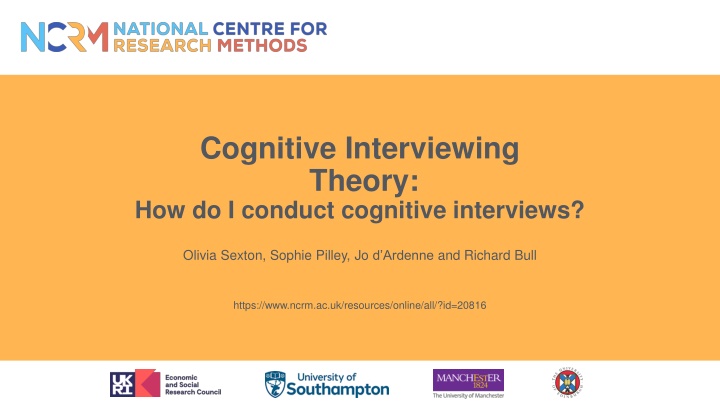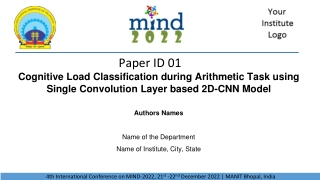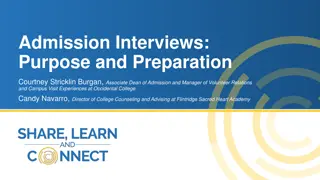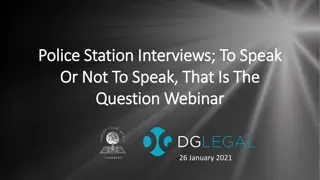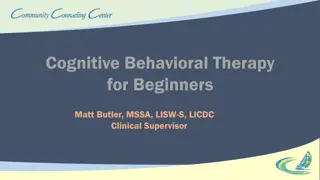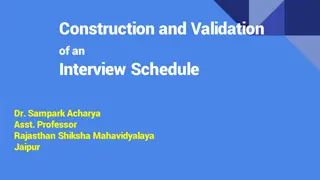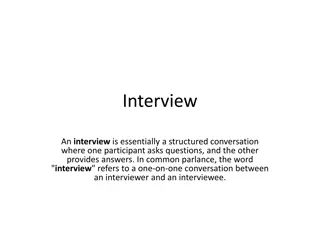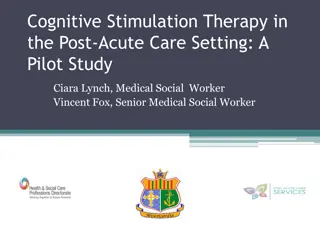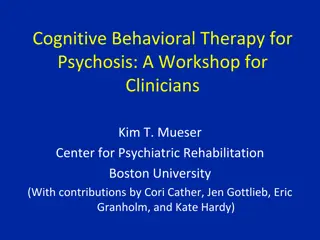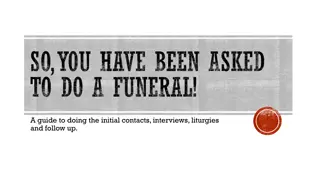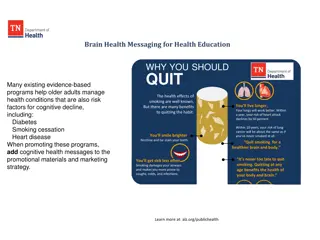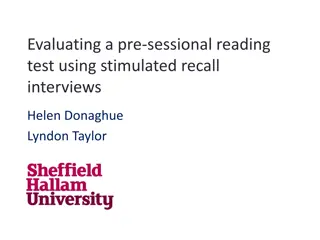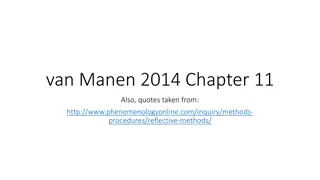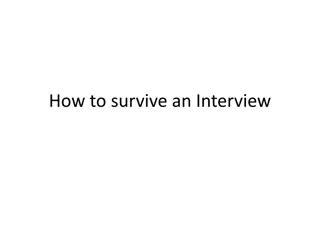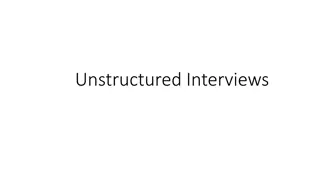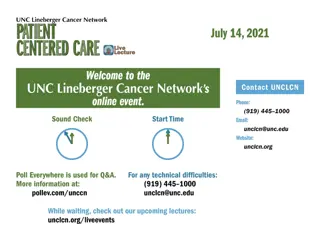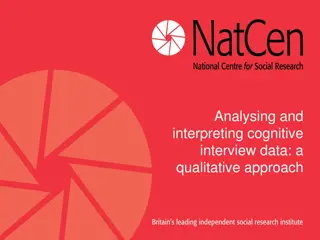Conducting Effective Cognitive Interviews
Learn how to conduct cognitive interviews effectively by understanding different techniques, designing interview protocols, and analyzing interview data. Key elements include administering questions, observation, think-aloud, and probing techniques.
Download Presentation

Please find below an Image/Link to download the presentation.
The content on the website is provided AS IS for your information and personal use only. It may not be sold, licensed, or shared on other websites without obtaining consent from the author.If you encounter any issues during the download, it is possible that the publisher has removed the file from their server.
You are allowed to download the files provided on this website for personal or commercial use, subject to the condition that they are used lawfully. All files are the property of their respective owners.
The content on the website is provided AS IS for your information and personal use only. It may not be sold, licensed, or shared on other websites without obtaining consent from the author.
E N D
Presentation Transcript
Cognitive Interviewing Theory: How do I conduct cognitive interviews? Olivia Sexton, Sophie Pilley, Jo d Ardenne and Richard Bull https://www.ncrm.ac.uk/resources/online/all/?id=20816
Overview UNDERSTAND DIFFERENT COGNITIVE INTERVIEWING TECHNIQUES HOW TO DESIGN AN EFFECTIVE INTERVIEW PROTOCOL ANALYSIS OF COGNITIVE INTERVIEW DATA
Cognitive interview techniques Cognitive interview techniques The key elements of a cognitive interview are: Administering the question Observation Think aloud Probing
Administer the question Administer the question The test questions should be asked in a realistic context If testing a face-to-face survey questions should be read out aloud by the interviewer If testing a self-completion survey participants should read questions themselves
Observation Observation Any hesitations? Any signs of frustration or boredom? Do participants ask for help at any point? Do they change their answers at any point? Do they skip any part of the task?
Observation Probes Observation Probes Any hesitations? Any signs of frustration or boredom? Can you tell me what you are thinking? Do participants ask for help at any point? Do they change their answers at any point? I noticed you changed your answer- why was that? Do they skip any part of the task? I noticed you skipped this question- why was that?
To get respondent to verbalise their thought process Aim: Demonstrate the technique to the participant. Get them to give you a demonstration back. Think Think- -aloud aloud Train Can you tell me what you are thinking? Remind and encourage Keep talking You re doing really well!
Probing General How did you go about answering that question? Comprehension Could you tell me in your own words what this question is asking? Retrieval How easy or difficult was it to remember that? Judgement Did you give an exact answer or did you make an estimate? Response How easy or difficult was it to find the answer you were looking for from the options provided? Was that easy or difficult to answer? Why? What time period were you thinking about? How accurate do you think this answer is? What did you understand by X when answering? Are there any answers missing from the options provided?
Developing Developing interview interview protocols protocols
Developing Developing interview interview protocols protocols Remember: Interviews are semi-structured. Protocols are guides not scripts.
Effective protocols Clear introduction Include aims of testing Neutral and open probes Consider probe placement Relevant to question testing Mode of interview
Effective protocols Clear introduction Include aims of testing Neutral and open probes Mode of interview
Effective protocols Clear introduction Include aims of testing Neutral and open probes How easy or difficult did you find that? Why? Can you give examples? Consider probe placement Mode of interview
Effective protocols Clear introduction Include aims of testing Neutral and open probes Consider probe placement Concurrent Retrospective Mode of interview
Effective protocols Clear introduction Include aims of testing Neutral and open probes Consider probe placement Mode of interview Face-to-face Remote: video + screen share
Summarising each case Analysis of Analysis of cognitive cognitive interview data interview data Combining case level summaries Thematic analysis Drawing conclusions
Case summaries Response to the question being tested Observations Summary of issues raised
Thematic analysis Familiarisation with charts Categorisation and labelling of each issue is issue X of the same as Y or is it different? Summarise issues occurring for each question: Three types of issue were identified with Q1: X, Y and Z Note: The aim is to describe each issue not quantify each issue
Drawing conclusions Why has this issue occurred? Three types of issue were identified with Q1: 1. Requests for the question to be repeated 2. Lack of understanding of the term X 3. Missing response options
Drawing conclusions Why has this issue occurred? Three types of issue were identified with Q1: 1. Requests for the question to be repeated 2. Lack of understanding of the term X 3. Missing response options What is the impact of this issue?
Drawing conclusions Why has this issue occurred? Three types of issue were identified with Q1: 1. Requests for the question to be repeated 2. Lack of understanding of the term X 3. Missing response options What is the impact of this issue? Options? Solutions?
Now we have learnt about how to conduct cognitive interviews to test survey questions The next part of the course will discuss: Other situations where cognitive interviews can be used
